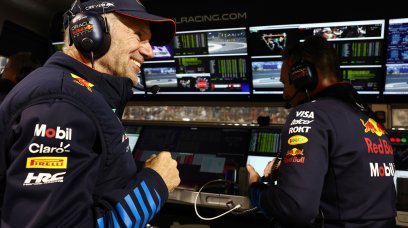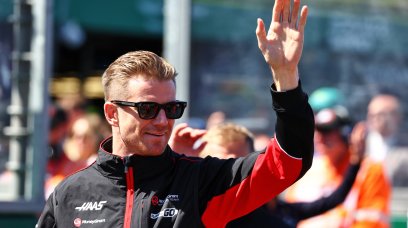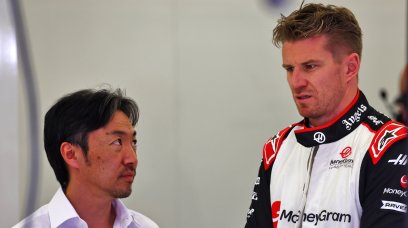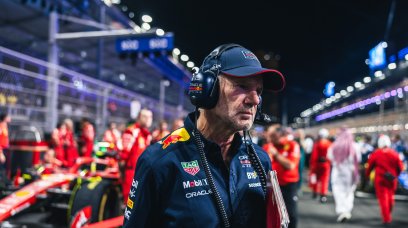Back in October 2019, prior to Covid, Formula 1's new era regulations were presented to all teams by the FIA, with a shelf life from 2021 to end-2024. It was anticipated that the current hybrid engine formula would be carried over until then, with the timing of a set of revamped power unit regulations – incorporating a number of 'green' initiatives to reduce F1's carbon footprint – chiming with a change of chassis regulations. So far, so good. Then came the pandemic, which threw F1's best-laid plans into confusion: existing chassis regulations were rolled over a year with minimal changes (mainly) for cost-saving reasons, in turn reducing the lifespan of the incoming regulations by a year (unless extended, which has been debated but not agreed). This, then, left the engine regulations in limbo – until, that is, Honda announced its withdrawal. Alarm bells began pealing lest others follow suit, as had been the case in 2008/9. Suddenly, there was renewed impetus to attract newcomers to avoid leaving F1 at the mercy of one or two power unit suppliers. This initiative coincided with the arrival of Stefano Domenicali as F1 CEO from VW Group subsidiary Lamborghini; thus the Italian was tasked with persuading Porsche and/or Audi that F1 provided a perfect mix of technological challenge and marketing pedestal for the brands. A summit was called in July 2021 during the Austrian Grand Prix weekend in Spielberg, attended by CEOs of Mercedes, Ferrari, Renault, Porsche and Audi, with Honda represented by Red Bull Racing, which, though, also punted its own engine project. A target date of mid-December 2021 for the PU 2026 (as the project is known) regulatory framework was set by FIA President Jean Todt, then nearing the constitutional end of his three mandates. It would be his last hurrah.
Five key areas for proposed PU framework
The proposed framework encompassed five main areas: 1) Engine cost caps in place, with newcomers granted a number of financial and operating exemptions, 2) MGU-H exhaust-driven energy recovery systems banned on cost and complexity grounds, 3) Internal combustion engine/hybrid power contributions to be approximately 50/50 rather than 75/25, 4) Carbon-zero fuels mandated, and 5) Introduction would be 2026. Porsche and Audi expressed keen interest, subject to 1) Agreement with the overall framework and 2) board approval, which was granted conditionally for both brands. Last November, both the FIA and F1 spoke confidently of one additional PU supplier, likely two. F1 has made cooing noises since but, significantly, no formal announcement has come, save for a vague commitment from VW Group CEO Herbert Diess in May this year. In the interim, F1's rumour mill went crazy: Audi would buy McLaren or Sauber outright, while Porsche was said to have inked a deal for 50 per cent of Red Bull. Both were and still are wide of the mark, primarily because no framework existed and thus neither brand could commit. Still, the brands regularly made warm comments about joining F1, but always there was an IF, which, as paddock folk know, is F1 spelled backwards. All this, though, reckoned without the intransigence of existing suppliers, who clearly feared an upset in the status quo. Additional power unit suppliers meant more competition: sporting, for obvious reasons; and commercial, as they stood to lose customers, particularly if the FIA invoked clauses that enable 'balancing' of engine supply amongst teams. Technically, too, there would competition given Porsche's reputation. Thus, politicking started in time-honoured fashion: by delaying the process. December came and went; no framework. Todt departed and was replaced by Mohammed Ben Sulayem as president, who, unlike his predecessor, has little in common with Domenicali. The FIA's April World Motorsport Council meeting – the next opportunity at which regulations could be formally ratified – came and went; still no framework. Then, in May 2022 it was announced that Peter Bayer, the FIA Secretary-General for Sport who drove the PU process, would leave the federation, replaced on an interim basis by Shaila-Ann Rao, formerly Mercedes F1 Legal Director. Sources are adamant that Bayer was vehemently opposed to the proposed changes as these pandered to existing PU suppliers; for his efforts he was placed on extended gardening leave. June's WMSC meeting came and went; again, no framework…
Porsche and Audi delaying F1 decisions
In the interim, Porsche and Audi, despite regularly reaffirming their intention to enter F1, kept delaying their final decisions pending a set of ratified technical, sporting and financial PU regulations while stridently pointing out that the clock was counting down on their preparation processes. This was, of course, music to the ears of existing PU suppliers, who doubled up on their tactics. "VW Group underestimated the level of bastards we have here in Formula 1," commented one team boss wryly. "Audi and Porsche made their intention to enter Formula 1 too clear, too early, too eagerly." Compounding the issue is that in mid-July VW unexpectedly announced the September departure of Diess, to be replaced by Porsche boss Oliver Blume. The VW lifer will wear two caps: VW Group and Porsche, making Blume the immediate superior of Audi CEO Markus Duesmann. The two are said to have had executive-level run-ins, more particularly over competing product plans. See where this could head? Multiple sources last week advised RacingNews365.com that a complete set of 2026-on PU regulations was finally distributed to major players on Wednesday, and that these vary considerably from the envisaged framework. Indeed, the word is that they pander to existing PU suppliers while potentially handicapping newcomers. The regulations are due to be ratified by the WMSC next week, some say on Wednesday. The word is that any technical differences are significantly smaller than originally tabled, enabling existing power unit manufacturers to carry over major items while newcomers need to develop completely new PUs in a truncated timeframe. Apart from deletion of MGU-H and variable intake manifolds, Mercedes, Ferrari, Renault (and Honda?) are able to carry over the main hardware: major cost, time and reliability advantages. As at the Hungarian Grand Prix, the situation was that Porsche and Red Bull held a memorandum of understanding contingent upon the full PU regulations finding favour with the Stuttgart brand , in which case they would operate a joint venture with Red Bull Powertrains effectively manufacturing PUs to Porsche design. These would then carry such branding and be supplied to the two Red Bull-owned teams. Having started preparations over a year ago, Red Bull's engine operation – whether under the aegis of Porsche or RBPT – is sitting pretty: as revealed by RacingNews365.com , the project's first full-size engine was fired up this week , plus all the heavy expenditure has been incurred. Not so Audi – whose proposed entry modus was outlined here in January – have not yet got F1-standard engineering or operating structures in place, nor committed heavy spending. Worse, as far as is known, they don't have running concept engines nor experienced F1 heavyweights in place. While sister brand Porsche's project is effectively up and running, Audi's programme is on the back foot, comparatively speaking.
Is the clock ticking on Audi's F1 entry?
A salient extract from our January analysis of the situation, which has changed little since, is: The Audi board's conditions that any entry be revenue-neutral would explain the company's overtures to McLaren and Sauber, as Audi could acquire a team in the interim and upgrade its facilities to 'works' standards under F1's capital expenditure clauses - which are not as restrictive as budget caps - in order to be ready for 2026 and by then be self-sufficient. Audi Sport have a fully-fledged motorsport operation in Neuburg (near Ingolstadt , Bavaria ). The [engineering] teams that designed and produced Le Mans-winning battery and flywheel hybrid units are largely in place, having switched focus to Formula E and Dakar (last-named with the E-tron buggy that made its debut this year, striking fear into the competition wit h spectacular performances), and could be readily switched to the F1 project. All the while the clock, though, is ticking, and – with the first budget cap restrictions set to bite in 2023 – Audi need to move with haste if the company is to not only make the cut by 2026 but enter F1 with a fighting chance. The last brand to rush into F1 was Honda, resulting in a loss of face, serial management changes and five years of embarrassment before it gained respectability. This will not have gone unnoticed in Ingolstadt. The bottom line is that the vested interests of existing teams have seemingly triumphed over the need for additional engine suppliers (and, for that matter, a need for more teams). Do not be surprised if one or both VW Group brands withdraw from the fight to enter F1 on equitable terms. If they do, F1 will be all the poorer for their decision – which would not bode well for the new FIA presidency or the interim Secretary-General.
Most read




















